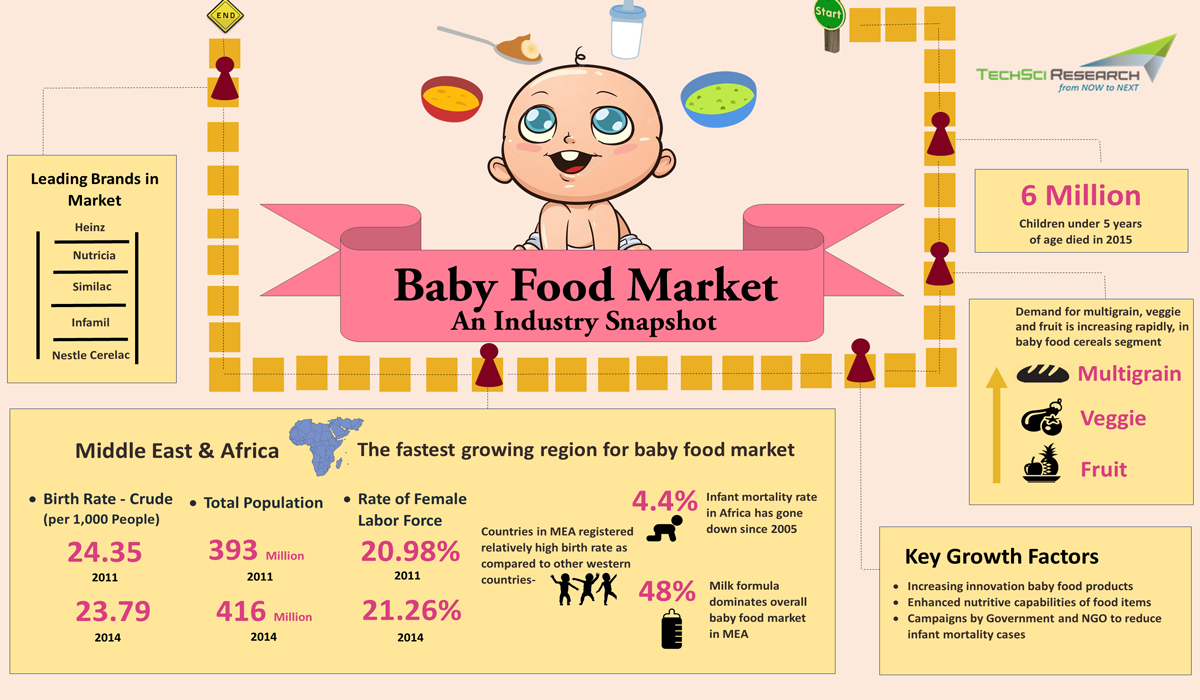
The baby food market is a multi-billion-dollar industry that has grown significantly over the past few decades. It is now a staple in many households around the world. But how did this market develop into what it is today? Let’s take a closer look.
Table of Contents
The Early Years
The first commercial baby food was created in the late 1800s by a German chemist named Justus von Liebig. He developed a liquid food that was designed to be fed to babies who were unable to breastfeed. This product was made from cow’s milk, wheat flour, and malt flour, and it was sold under the name “Liebig’s Soluble Food for Babies.”
In the early 1900s, the first baby food companies began to emerge. These companies, such as Gerber and Heinz, produced canned baby food that was convenient and easy to use. These products contained pureed fruits, vegetables, and meats, and they quickly became popular with parents who were looking for an alternative to homemade baby food.
The Baby Boom
The baby food market grew rapidly in the 1950s and 1960s, thanks to the post-World War II baby boom. During this time, parents were having more children than ever before, and they were looking for convenient and affordable ways to feed their growing families. Baby food companies responded to this demand by expanding their product lines and introducing new flavors and textures.
In the 1970s and 1980s, the baby food market faced some challenges. There was a growing concern among parents about the nutritional value of commercial baby food, and some studies suggested that these products contained high levels of sugar and salt. As a result, many parents began to make their own baby food at home using fresh fruits and vegetables.
The Modern Era
In recent years, the baby food market has undergone a revolution. There has been a growing trend towards organic and natural products, as parents become more concerned about the ingredients in their children’s food. Many baby food companies have responded to this trend by introducing organic and all-natural products, and some have even begun to offer customizable meal plans that are tailored to a baby’s individual needs.
Technology has also played a role in the development of the baby food market. Many companies now offer online ordering and delivery services, making it easier than ever for busy parents to get the food they need for their babies. There are also a number of apps and websites that provide information and advice on feeding babies, making it easier for parents to make informed decisions about their child’s nutrition.
Conclusion
The baby food market has come a long way since the days of Liebig’s Soluble Food for Babies. Today, there are a wide variety of products available to parents, from traditional purees to organic and all-natural options. The market has also benefited from technological advances, making it easier than ever for parents to access the food they need for their babies. As the market continues to evolve, it will be interesting to see what new developments and trends emerge.
Frequently Asked Questions
Q: Is homemade baby food better than commercial baby food?
A: It depends on the ingredients and preparation methods. Homemade baby food can be a great option if you use fresh, high-quality ingredients and prepare it properly. However, commercial baby food can be a convenient option for busy parents, and many products are now made with organic and all-natural ingredients.
Q: Are all baby food products safe?
A: Most baby food products are safe when used as directed. However, it is important to read the labels carefully and to choose products that are appropriate for your baby’s age and developmental stage. If you have concerns about a particular product, you should speak to your pediatrician.
Q: Can babies eat regular food?
A: Babies can begin to eat solid foods at around 6 months of age. However, it is important to introduce new foods slowly and to watch for any signs of allergies or intolerance. You should also avoid certain foods, such as honey and cow’s milk, until your baby is older.
Q: How can I make my own baby food?
A: Making your own baby food can be easy and affordable. You can start by steaming or boiling fruits and vegetables and then pureeing them in a food processor or blender. You can also add breast milk or formula to adjust the consistency. Be sure to store homemade baby food in the refrigerator or freezer and to use it within a few days.
Q: What should I look for when choosing baby food?
A: When choosing baby food, it is important to look for products that are appropriate for your baby’s age and developmental stage. You should also read the labels carefully and choose products that are made with high-quality ingredients. Consider choosing organic and all-natural options if you are concerned about the ingredients in your baby’s food.
